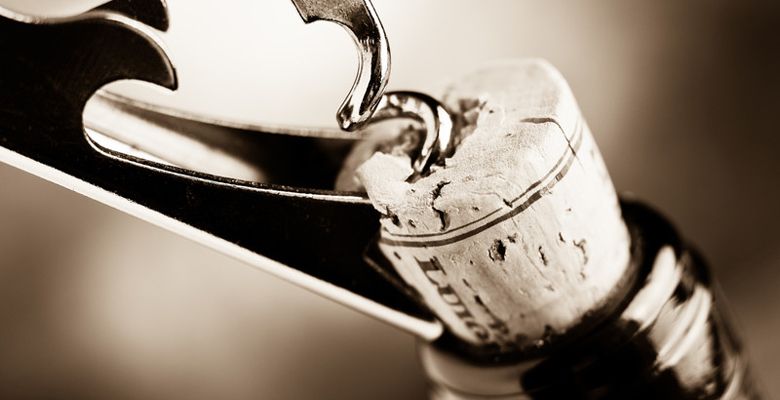Outside the Box
Eschewing experts to achieve self-actualization
Sometimes a good title acts as the scaffolding for ideas waiting on words and sequence to appear, sooner or later. This commentary is one such case. Over two December days, I pored over musings by Amber LeBeau, a self-proclaimed wine geek with wine creds, wine steward chops and a nifty blog called spitbucket.net.
The first post, “Stop Scaring the Newbies — A Look at the Wine Hierarchy of Needs,” cleverly reproduces Maslow’s 1943 study of attitudes that shape behaviors in psychological terms. The diagram, recognizably a pyramid, demonstrates the needs of humans in terms of hierarchy — though modified with text appropriate to the wine subject at hand. It is a map of obedience for many who externalize the Maslow schema from its supposed look at individual motivations and needs. LeBeau turns a nice pirouette on the implications of the model applied to acquiring wine knowledge without having a nervous breakdown.
If you want to pursue how the Maslow way lit the path for American Exceptionalism, check out books like “The Hidden Persuaders,” “The Man in the Gray Flannel Suit,” “The Organization Man,” or “The Power Elite.” Each, in its way, demonstrates how societies enforce degrees of conformity as they also appear to project an illusion of good feelings about belonging to the group. Sustenance, security and self-esteem come at a cost.
The pinnacle realized as “self-actualization” really presents the paradox that the self submits to pressure from above, and thus disappears. Those at the apex are demi-gods, not you. I know wine critics who behave as if they’re up there, their dicta falling from above — and you better believe it. In the search for confidence in wine knowledge, if you do not respond as instructed to the pronouncements of “experts,” the failing excludes you from everyone who drinks in step to the fashion.
The main point is to try to get beyond what others may think of you by doing an inside job — in time, the fear of the unknown varietal will vanish like recall of all-nighters spent cramming for final exams. Here are some crucial habits to recognize, and with a little pleasure-filled effort, you can break the “mind-forg’d manacles,” as poet William Blake wrote long prior to Abraham Maslow’s “Bermuda Triangle” of needs.
As the grid is expanding, drinking outside the box has many chutes and ladders. Its goal is to breed self-confident taste memory based upon one’s own experience. This is a voyage of discovery, not exile.
Let’s start with numbers, four of them. Other chains of despair caused by encountering practices you can’t fathom will come along later. It is, after all, a voyage.
“Wine is food,” Robert Mondavi told me over dinner 30 years ago. Since I am name-dropping, David Adelsheim told this writer that we need remember wine is not the most efficient “alcohol delivery system.” Wine is a social lubricant, and LeBeau makes this point concerning the need to belong.
All these statements have merit. But when you read that a wine states its “alcohol by volume” as 13.9 percent, think that translates to 27.8 percent proof, not a Fireball, but greater than 6 ounces of the total contents of a wine bottle holding about 25 ounces.
As wine complements foods so well, we tend to overlook its buzz-ability. But alcohol helps give wines balance and structure, contributing to the way wine will age when stored properly. Keep in mind, I am pointing to a fact of life — wine is fermented grape or other juice. And I like the warm buzz.
The second and third numbers wrestle like sumos on a saké binge. These are rating scores, a phony objectivity based solely on subjective assessments of wine. The other is cost, often shamelessly spiked by the fake numbers.
Turn a deaf ear to anyone who recommends a wine by its score. To sucker punch such predators, sweetly ask, “What do you like about this wine, and tell me without referring to the rating.” If they fudge, request said person to send over someone who can provide a meaningful answer.
At a wine shop or supermarket, try this no cost experiment. Select two wines of the same varietal, like Pinot Gris or Pinot Noir. Choose two with rating numbers and shelf hangers. See what the hangers proclaim above the score. Then read the copy on the back label. Chances are you will not find anything but weasel wine words about perfection, excellence, and awards won. How about the wine?
LeBeau gets it right in another post, “Winery Tasting Notes Done Right” (Dec. 17, 2019). Wine label palaver and screaming scores are brutal efforts to make a sale; or as she recalls some overused adjectives — in this case “chocolatey” — backfire:
“What are the benefits of telling consumers that a wine has notes of chocolate? Sure, there may be a halo effect on the wine from positive associations with chocolate. That may help someone pick up a bottle. But there is also a risk of negative associations backfiring, too. Back in my retail days, I once had a customer get turned off by a wine described as chocolatey because she was lactose intolerant. (Yeah, I know.) But you get the same issues with virtually every descriptor.”
She adds this bit of corrective invective: “A tasting note should convey what sets one ‘balanced, Bordeaux-style wine [that] coats the palate with a velvety richness and fine tannin structure’ apart from every other balanced, velvety rich and finely tannic wine. Otherwise, it is just blowing the same useless, marketing BS that virtually every other bottle is blowing. Where is the consumer being helped in this?”
Once more, a little effort at the display shelf can help you fly by the nets of seductive prose or meaningless numbers. And speaking of numbers...
Vintage refers to the year wine grapes were harvested and made into wine. A stroll down the supermarket trail will likely have rows of wine of recent years or no years at all on the label front. Winemakers and retailers have an imperative to move goods. So newness — so American a preference — assists the effort. Subliminally, new means “better” or “fresher.” Or “most fashionable, hip, comtempo, so YOU.” Since 92 percent of wine purchased is consumed with three days of purchase suggests that new wine is better than old wine, right?
Just think if you had a ‘55 Thunderbird in your garage instead of your great aunt’s last Ford Escort — with the passenger door panel crunched in two places — that you inherited. It also comes with a clothes hanger substitute for the radio antenna.
Value, indeed, comes from experience and occasion rather than what someone else insists. Wine in a glass in hand is a tutor, so let it tell its story.











